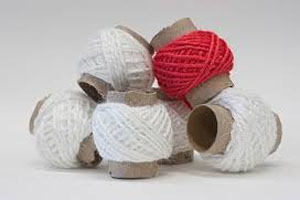
Wool-Like yarn developed using leftover parts from meat processing plants
YarnsandFibers News Bureau 2015-08-21 12:00:00 – ZurichA team of Swiss scientists, led by Wendelin Stark and Philipp Stoessel, have invented a way to create a wool-like fiber using leftover parts from meat-processing plants. The technique, which was fine-tuned over four years at Zurich’s Functional Materials Laboratory, transforms animal-rendered gelatin into fibers that share many of wool’s qualities, including softness and thermal insulation.
According to Stoessel, all those little bits that don’t make it onto the dinner plate are dissolved in water, precipitated with an organic solvent, and then extruded. The material is then ejected through the syringe and allowed to harden into a gelatin form. Those strands are then stretched and dried on a proprietary machine and within a few hours are ready to be spun into balls of yarn.
Stoessel admits that the yuck factor may prove a marketing challenge but points out that the new wool is created with materials that would otherwise go to waste. It also has a significantly smaller carbon footprint than some synthetic, petroleum-based alternatives.
The process of creating animal-based yarn hasn’t changed much over the millennia: Sheep, goats, alpacas, or what have you are sheared of their wool, fur, or hair, the strands are washed and separated into bunches, and that material is spun into yarn. Today many of the steps have been mechanized, but it still starts with an animal and a pair of shears.
Market Intelligence
Ask for free sample Report

experience
Customer Base
dedicated team
Countries Served Worldwide









